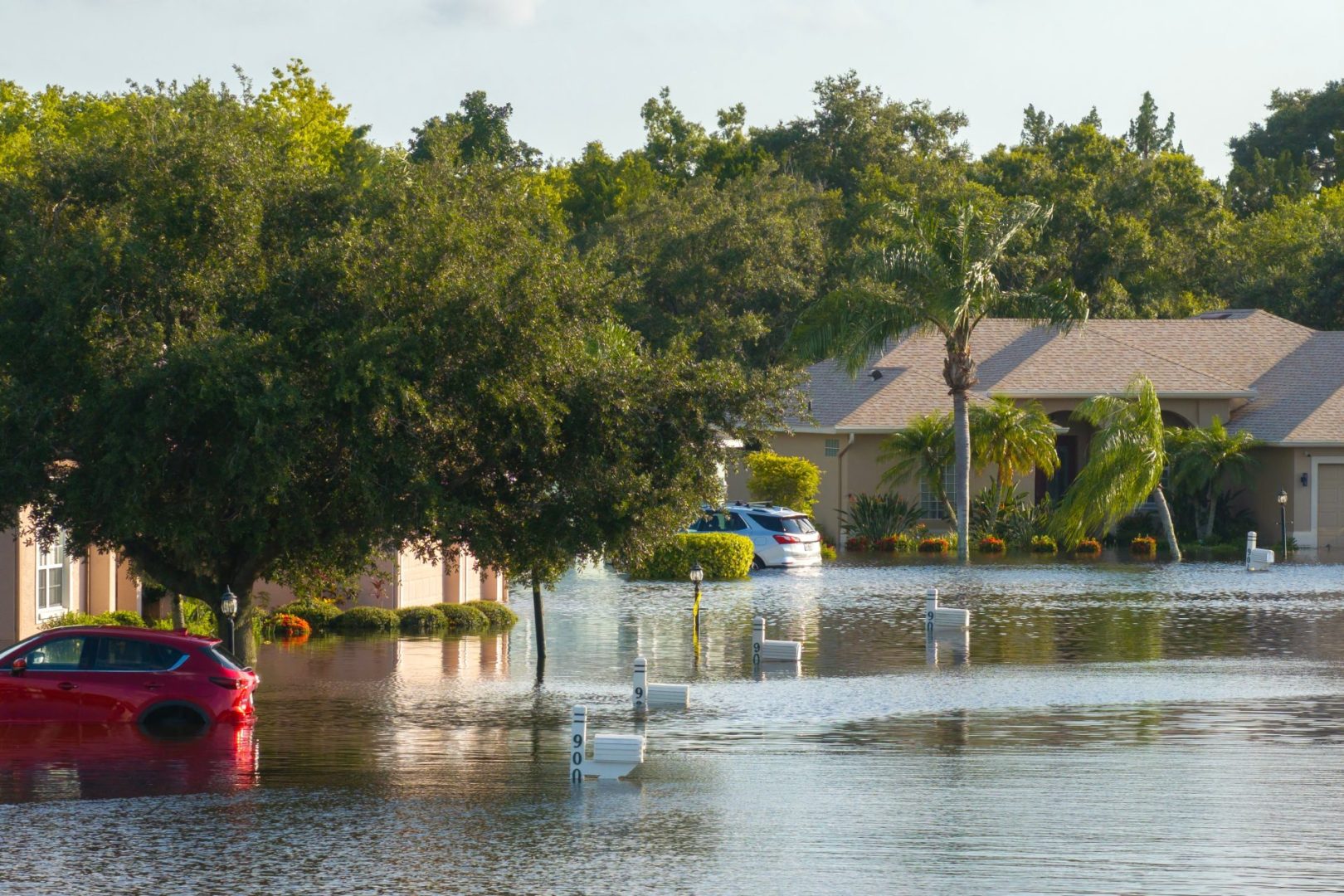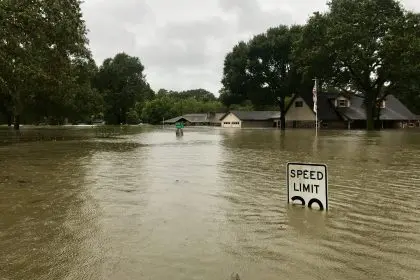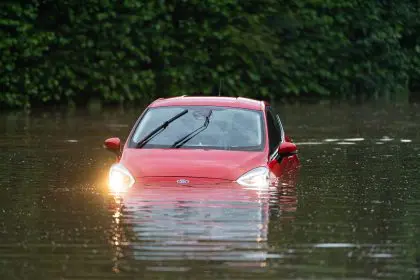Flash floods kill more people than any other weather-related disaster, and they can develop in minutes with little to no warning. Unlike river flooding that builds gradually over days, flash floods create life-threatening conditions almost instantly, turning familiar streets into deadly torrents that can sweep away cars, buildings, and people.
When faced with rapidly rising water, knowing these seven critical actions could mean the difference between life and death.
Get to higher ground immediately — don’t wait
The moment you see or hear about flash flooding in your area, move to the highest ground available as quickly as possible. Don’t wait to see how bad it gets or try to save belongings — every second counts when water is rising rapidly.
If you’re in a building, go to the highest floor and stay away from windows. If you’re outdoors, head for hills, elevated roads, or any structure that puts you above the flood level. Even a few feet of elevation can save your life.
Never try to outrun a flash flood on foot if you’re in a low-lying area. Water moves much faster than you can run, and the current can knock you down even when it’s only ankle-deep. Instead, move perpendicular to the flow toward higher ground.
If you’re in a vehicle when flooding begins, abandon it immediately if you can safely reach higher ground. Cars can be swept away in as little as 12 inches of moving water, and most flood deaths involve people trapped in vehicles.
Turn around and don’t drown — never drive through flooded roads
This simple phrase saves lives: “Turn Around, Don’t Drown.” It takes only 12 inches of moving water to carry away a vehicle, and 18-24 inches to sweep away large SUVs and trucks. Water depth is deceiving, and road surfaces may have washed away beneath the water.
Even if the water looks shallow, never attempt to drive through it. The force of moving water is incredibly powerful — just six inches of moving water can knock an adult off their feet, and 12 inches can carry away a car.
If you encounter flooded roads while driving, turn around and find an alternate route immediately. Don’t try to gauge the depth or test whether your vehicle can make it through. Many flood victims die because they thought they could navigate through water that looked manageable.
Remember that it’s impossible to judge water depth or current speed from inside a vehicle, especially at night or in poor visibility conditions.
Abandon your vehicle if it stalls in water
If your car stalls in flood water, get out immediately and move to higher ground. Don’t try to restart the engine or wait for help inside the vehicle. Cars can be swept downstream in seconds, and rising water can trap you inside.
Exit through the windows if the doors won’t open due to water pressure. Electric windows may still work briefly even if the car is partially submerged, so act quickly. If windows won’t open, use any hard object to break the side windows — rear windows and windshields are much harder to break.
Once out of the vehicle, move away from it immediately. Don’t try to retrieve belongings from the car. Abandoned vehicles can shift, roll, or be pushed by the current, creating additional hazards for anyone nearby.
If the current is too strong to reach safety immediately, climb onto the roof of your car or any available higher surface and wait for rescue rather than attempting to swim through flood waters.
Avoid walking or swimming in flood water
Flood water is extremely dangerous for multiple reasons beyond just the current. It often contains sewage, chemicals, debris, and dangerous objects that can cause serious injury or illness. Walking through flood water should always be a last resort.
If you absolutely must walk through standing water, use a stick or pole to probe the ground ahead of you. Manholes, storm drains, and road surfaces may have washed away, creating hidden drop-offs that could trap or drown you.
Never attempt to swim through flood water unless it’s your only option for survival. The current is usually much stronger than it appears, and debris in the water can cause serious injuries. Cold water can quickly lead to hypothermia, reducing your ability to swim effectively.
If you’re swept into flood water, try to float on your back with your feet pointed downstream to protect yourself from impact with obstacles. Look for opportunities to grab onto something stable or work your way toward the edge of the flow.
Stay informed and heed evacuation orders immediately
Monitor weather alerts, emergency broadcasts, and local officials’ instructions constantly during flood conditions. Flash flood warnings mean imminent danger to life and property — act immediately rather than waiting to see what develops.
If authorities issue evacuation orders for your area, leave immediately. Don’t wait until conditions worsen or try to protect your property. Emergency officials base evacuation decisions on life-threatening conditions that may not be obvious to residents.
Keep a battery-powered or hand-crank radio available for emergencies, as power and cell service often fail during severe flooding. NOAA Weather Radio provides continuous updates and emergency information when other communication methods aren’t available.
Have multiple ways to receive emergency alerts, including weather apps, local emergency notification systems, and wireless emergency alerts on your phone.
Prepare an emergency kit before disaster strikes
Create an emergency kit before flood season that includes water, non-perishable food, medications, flashlights, batteries, first aid supplies, important documents in waterproof containers, and emergency contact information.
Keep emergency supplies in multiple locations — home, workplace, and vehicles — since you never know where you’ll be when a flash flood develops. Include items specific to your family’s needs, such as baby supplies, pet food, or medical equipment.
Have a family emergency plan that identifies safe meeting places, evacuation routes, and out-of-area contact persons. Practice your plan regularly so everyone knows what to do when seconds count.
Store emergency supplies in easily accessible locations on higher floors or elevated areas of your home, since you may not have time to gather items from basements or lower levels during rapidly developing flood conditions.
Know the warning signs of flash floods
Learn to recognize the natural warning signs of flash flooding, such as rapidly rising water levels, unusual sounds like rumbling or roaring water, and heavy rainfall that’s much more intense than normal weather patterns.
Be especially alert during nighttime when it’s harder to see rising water levels. Many flash flood deaths occur overnight when people can’t see the danger approaching their homes or vehicles.
Understand your local geography and know which areas are prone to flooding. Low-lying areas, valleys, canyons, and regions near rivers or streams face higher risks during heavy rainfall events.
Pay attention to weather conditions upstream from your location, as heavy rainfall in distant areas can cause flash flooding downstream even when your immediate area isn’t experiencing severe weather.
After the flood — staying safe during recovery
Wait for officials to declare areas safe before returning to evacuated locations. Flood waters may have damaged roads, bridges, and buildings in ways that aren’t immediately visible, creating ongoing safety hazards.
Avoid driving or walking through areas that were recently flooded until authorities have inspected and cleared them. Roads may have been undermined, and debris may create hidden dangers.


















